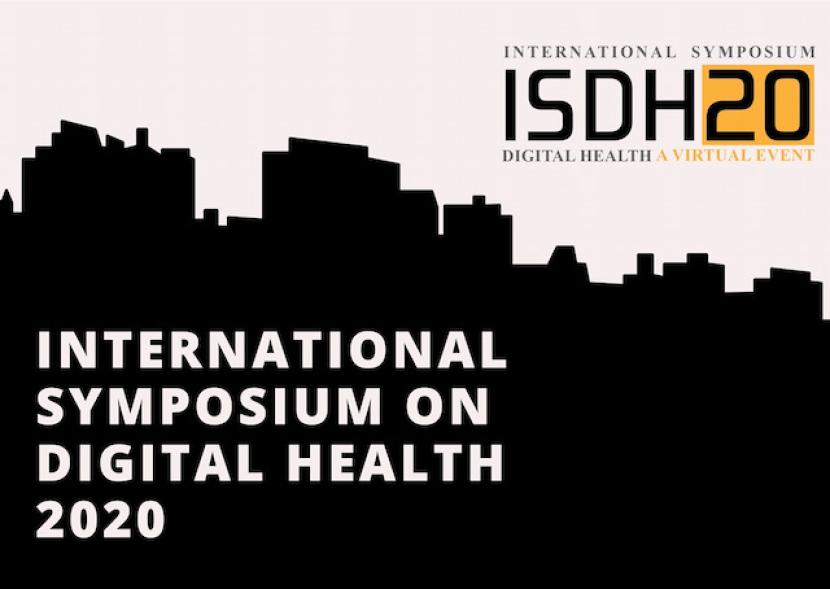
SUMMARY
Digital infrastructures and the data they can harness are opening up new possibilities for health care. The potential benefits are extremely wide-ranging, and with digital health technologies developing so rapidly, it is essential to identify and support those that will help most in improving health care. The 2020 International Symposium on Digital Health hosted two distinguished panels of experts highlighting exciting examples of health innovation during what all speakers agreed would likely be remembered as the ‘digital pandemic’. Speakers explored barriers and enablers of innovation, arguing that while we can expect some shift back from the rapid acceleration of uptake during COVID-19, opportunities for digital health going forward have radically changed. Our feature article highlights key themes in the panel discussions.
STORY
Digital infrastructures and the data they can harness are opening up new possibilities for health care. The potential benefits are extremely wide-ranging, from using treatment data-sets in new ways, to incorporating machine learning into diagnoses, to phone apps that can monitor health indicators or give advice. With digital health technologies developing so rapidly, it is essential to identify and support those that will help most in improving health care. This is the focus of WUN Interdisciplinary Research Group (IRG): The Role of Big Data in Addressing the Determinants of Non-communicable Diseases in the Ageing Era.
The IRG recently held their second International Symposium on Digital Health (ISDH), opened by the group’s PI Professor Kelvin Tsoi from CUHK, and featuring speakers from both WUN members and additional experts from around the world, to comment on Digital Health in the context of COVID-19. Panellists and chairs drew from their wide-ranging and often cross-sectoral academic, clinical, private sector, and third sector experience to explore trends in digital health during the COVID-19 pandemic and their implications for the future.
Summing up the extraordinary contrasts of this year, Steve Davis (Bill and Melinda Gates Foundation, panel 2) reflected: ‘It has indeed been a moment of deep tragedy, confusion, and a lot of incoherency. But it’s also been a moment where we’ve seen what often happens in crises … we’ve seen an extraordinary human response, community responses, and certainly brilliant new approaches to problem-solving and powerful collaborations.’ Throughout the world, digital health has been at the centre of COVID-19 responses. As Ashley McKimm (British Medical Journal, panel 1) highlighted, we are witnessing ‘the first pandemic where the rapid deployment of technology and particularly digital technology became a core component of how we understand, how we contain, and how we deliver a potential treatment’.
Kendall Ho (University of British Columbia, panel 2) explained, there are three main pathways of technologies for health: those among clinicians; those between clinicians and patients; and those from the patient to personalised mobile health technology. Of these, telehealth consultations have been amongst the most visible changes during the pandemic. In the United States, for instance, there has been a 4,000% growth in telemedicine and where Ho is based, in British Columbia, Canada, one in two people have by now made use of similar services. For these changes to be sustained, however, a shift in attitudes is also required. As Homero Rivas (Mohammed Bin Rashid University of Medicine and Health Sciences) emphasised, this means equipping physicians with the skills and understanding to make digital health a part of their standard practice. Awareness of the digital divide must also shape approaches, several panellists noted.
‘Telehealth is a disruptive process,’ Anthony Smith (University of Queensland, panel 1) argued, because it forces us to reconsider and ultimately rethink how we provide healthcare services. He noted that the needs of different services are complex and unique, requiring tailored application of tools and systems. Focusing on international exchanges between clinicians, Tomohiko Moriyama (Kyushu University Hospital, panel 2) showed the potential of remote training to reach more colleagues at less cost and with greater alignment to different clinical settings. ‘By telemedicine we can make medical education sustainable’, he concluded.
Mobile health and digital therapeutics (DTx) were another of the symposium’s key themes. Underpinning the multiple potential benefits of DTx, Josip Car (Nanyang Technological University, panel 2) is that ‘they are reaching into where the traditional therapeutics may not be able to work or may not be affordable’ and ‘are creating new opportunities for improving processes and outcomes.’ By way of example, he noted that only about half of prescribed medicine is taken as stipulated; DTx may help address this. Conversely, Jonathan Chen (Stanford University, panel 1) proposed AI as a support for clinicians faced with the ever-increasing complexity of modern medicine, a knowledge bank that exceeds what individuals can retain. Through such support, he argued, we could begin to address structural issues in which ‘the scarcest health care resource is access to a human expert.’
Björn Schuller (Imperial College London, panel 1) outlined how diagnosis using signals captured via a smart phone or watch, which had already been developed for a range of conditions prior to the pandemic, was now being developed for COVID-19. Audio capture by mobile devices could also be used to monitor social distancing and its well-being effects, as well as tracking treatment and recovery. Another illustration of potential was provided by Dean Ho (National University of Singapore, panel 1), who spoke about the use of artificial intelligence (AI) models to assist in developing individually tailored and dynamic drug combinations and doses, analysing patients’ own data to keep the treatment at optimum levels.
The role of evidence and regulation was a persistent thread during the discussions. Many panellists agreed that the evidence base for digital health is currently lagging behind the pace of innovation, with the rate of practical uptake also slow. Davis, who is also Co-chair of the World Health Organization’s Digital Health Technical Advisory Group, noted the inconsistency of policy and regulatory frameworks, which he described as ‘at best a vacuum and at worst a patchwork’. During the pandemic, this has meant that health providers have sometimes been overwhelmed by voluminous and uncoordinated innovation efforts, and there are few mechanisms to convert spontaneous generosity into long-term financing. However, as the evidence base from practices during the pandemic expands, there is an opportunity to work in partnership with regulators to develop new digital health innovations safely and with common purpose.
—
The WUN partner institutions for the digital health research group are The Chinese University of Hong Kong, University of Leeds, University of Rochester, and University of Southampton. For more information see their WUN page. Recordings of the two panels are available on the ISDH 2020 website.
